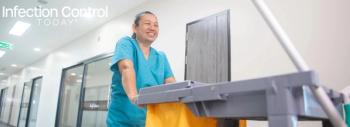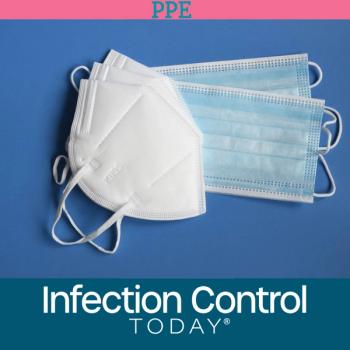
The Postpandemic IP: From Task-Doer to Systems Leader
In a postpandemic health system, infection preventionists are hired for certifications but kept for soft skills. In this second installment of ICT's roundtable, veteran IPs chart the shift from task-doer to systems leader, calling for smarter staffing, structured onboarding, and relationship-first programs to beat burnout and turnover.
If the pandemic rewired the circuitry of health care, it also rewrote what it means to be an
Hiring Has Hardened—and the Skill Set Has Broadened
Several panelists described a job market that now expects more proof of competence up front. ICT contributing editor Carole W. Kamangu, MPH, RN, CIC, the CEO, founder, and principal infection prevention strategist for Dumontel Healthcare Consulting, noted the sharp rise in certification requirements: “More and more organizations require the CIC before accepting a professional to come on board.” That creates a painful Catch-22 for newcomers: “You have to have a CIC to get a job, but you can’t get the job to get the CIC.” Her advice is pragmatic—volunteer, intern, or shadow to get hands-on experience and exposure to rounding and culture.
But credentials are only half the story. The role itself has expanded beyond task lists. “With the pandemic, we really noticed that infection prevention has evolved beyond just being a task-related job,” Kumangu said. “It requires systems thinking. It requires leadership, soft skills… If you can’t communicate, it will be really hard as an IP.”
Staffing: One Size Doesn’t Fit a 40-Bed SNF and a 400-Bed Campus
Regulatory expectations have also shifted, especially in postacute care. Joi A. McMillon, MBA HA, BSN, CRRN, WCC, CIC, CJCP, HACP-CMS, AL-CIP, the CEO of JAB Infection Control Experts, pointed to minimum time requirements for IP work and how they collide with reality when roles are blended with director of nursing or assistant director of nursing, or staff development duties: “What ends up happening is infection prevention gets pushed to the back.” She contrasted facilities with 47 skilled beds and those with 400 total beds that still face the same “20-hour requirement,” arguing for staffing matched to risk and scope.
Her message to executives is unapologetically return on investment-focused: “Infection prevention isn’t just a checkbox. There is a [return on investment]…even if you don’t see it until someone explains… the value that infection preventionist brings to the table.”
Beyond Nursing: The Power—and Responsibility—of Diverse Backgrounds
The panel celebrated the profession’s widening doorway. Garrett Hollembeak, CRCST, CIS, CHL, CIC, system infection preventionist for medical device reprocessing at Bon Secours Mercy Health in Cincinnati, Ohio, who entered IP without an RN, sees both opportunity and obligation: “You get to come in with an area of specialty—lab, sterile processing department], pharmacy—and that’s wonderful. But you don’t want to be hypersiloed.” The CIC can be a leveling baseline, but the onus is on the IP to stretch: “Move up and forward what you know—and pass that on.”
Lerenza L. Howard, DHSc, MHA, CIC, LSSGB, manager of infection prevention and quality improvement at La Rabida Children’s Hospital in Chicago, echoed the call for inclusion: “I was the first nonnurse IP at an institution.” Her experience—and an abstract she coauthored—showed the medical technologist competency model aligns with [that of the Association for Professionals in Infection Control and Epidemiology (
Sometimes the “diverse background” comes from a direction even IPs don’t expect. Nathaniel Napolitano, MPH, the CEO of Nereus Health Consulting and a health care epidemiologist for Harborview Medical Center in Seattle, Washington, recently trained a new IP from industrial hygiene: “No RN, no MPH, no clinical hospital background… They’re taking on the role from IH to manage air and water components and train for ICRA.” It surprised him—but it also signaled how environmental and facilities expertise is being integrated into prevention programs.
From “Infection Control Nurse” to a Profession in Its Own Right
For Missy Travis, MSN, RN, CIC, FAPIC, a consultant for IP&C Consulting, and a former nurse, the change is personal and historical. “Starting in IP in the year 2000… the role was ‘infection control nurse.’ Employee health was bundled in. It’s been great to see them recognized as separate job descriptions with different skill sets.” She welcomes the multidisciplinary turn: “Even though I come from nursing, I see other backgrounds where it’s a great fit….This is a profession with its own skill set.”
Smarter Staffing—and Smarter Retention
At the national level, Brenna Doran, PhD, MA, ACC, CIC, AL-CIP, founder and CEO of Innovative Partner Solution and a researcher on IP retention and burnout, sees momentum—and gaps. The APIC staffing calculator gives leaders “a baseline,” she said, but it must flex for organizational complexity and the extra duties IPs are asked to absorb. “There’s still an opportunity… to present a business case that covers the core IP program and the additional work you ask of us daily.”
Her retention research is equally instructive: in a project involving more than 635 IPs, key drivers were work-life balance, reasonable workload, flexibility, and good leadership. Burnout, she added, “predates the pandemic” and remains a central threat to the talent pipeline. On the solution side, she praised cross-functional partnerships—data analysts, environmental hygienists, epidemiologists—to fill skill gaps and lighten the lift.
What Great Onboarding Looks Like (and Why Solo IPs Need a Plan B)
Asked to design the “perfect” onboarding, panelists converged on structure, sponsorship, and social capital. Kamangu contrasted nursing’s clear early structure with the ambiguity new IPs face: “Usually there’s no structure…. Many are still lacking a plan for the first 90 days.” For solo IPs, she urged intentional external scaffolding: “Work with your manager…but also reach out to groups like ours. We can hold your hand those first months, teach you the culture, and build a team of champions so you’re not isolated.”
Howard added the organizational lens: policies must be lived processes, not PDFs; executive buy-in is critical for a department that is “nonrevenue generating” but mission-critical. And for leaders without IP expertise? Look outward. “The field may be small, but once you’re in it, you can tap APIC chapters and public health as extensions of your team.”
From a training standpoint, Napolitano proposed a simple model: “There is an ideal way to onboard somebody into an IP role, whether they're seasoned IP or a beginner. It's structured specifically to the facility, but ideally, it's a 30-day shadowing procedure, where you're paired up with somebody and you're going through the role of the day. You're taking on new things as they come in.”
However, what if you’re alone? McMillon advised proactive autonomy: “However, even in roles like that, if you are a solo IP...you've got to be able to be autonomous enough and confident enough to seek out your own resources. I mean, let's look at the postacute environment, it's changing so much, you've got all these postacute care facilities that are not just having long-term.”
Mindset, Relationships, and the Impostor Monster
Change the mindset, change the trajectory. Hollembeak warned that moving into IP at a familiar facility can trigger “hypocrisy or imposter syndrome” when you correct peers for practices you once shared. The antidote is transparency and purpose: “Turn it into a teaching moment: ‘I used to do that exact thing. Here’s what I learned and the outcomes it can cause.’”
For Doran, who is also a member of ICT’s Editorial Advisory Board, successful starts begin with self-knowledge: “Reflect on your learning style and perceived gaps. Cocreate structure with your leader so you contribute in ways that help you feel successful.” Then devote the first 30 to 90 days to relationship building: Walk around, be curious, ask about workflows (and their dogs and weekends). “IPs are 90% relationships,” she said. Positive micromoments compound into faster
Howard suggested formalizing that self-work: “Embed leadership assessments—even something like Myers-Briggs—during onboarding… so you see your style and areas of opportunity. Early insight fuels better partnerships for the long haul.”
Coaching makes the growth stick. As Doran put it, mentors help you rehearse hard conversations and debrief stumbles: “We’re happy to share the moments that didn’t go well—and our wins.”
Attitude matters as much as knowledge, said Travis. Too many arrive braced for conflict—“like nurses used to say, ‘nurses eat their young.’” She urged a different posture: “Shift to learning and team. You can’t give yourself all the knowledge instantly, but you can change your attitude in an instant.”
And when the inner critic pipes up? Kamangu offers a centering line she uses with coachees: “Infection prevention starts with us, but it’s bigger than us. We all have impostor moments, even with decades of experience. The work is learning to shift the mindset and move through barriers.”
The 2025 IP Playbook
What emerges is a modern playbook for hiring, growing, and keeping IP talent:
Hire for potential, certify for baseline: The CIC is a common threshold, but don’t overlook diverse backgrounds that fortify programs (lab, SPD, industrial hygiene, pharmacy, data).
Staff to risk and reality: Use calculators as a starting point, then customize for complexity. Make the business case for core work and the “asks” beyond it.
Onboard with structure and sponsorship: Pair new IPs with a 30-day shadow, co-create a 90-day plan, and build internal champions early, especially for solo roles.
Measure and manage burnout: Balance workload, offer flexibility, and invest in leadership quality. Retention is a system property, not an individual virtue.
Make relationships the operating system: Curiosity, clarity, and empathy turn resistance into partnership.
Normalize self-work: Assess styles, coach the gaps, and practice the conversations that move programs forward.
In other words, the successful IP of 2025 is still a steward of science, but also a communicator, coalition-builder, business translator, and coach. The pathogens aren’t getting simpler. Fortunately, neither are IPs.
Newsletter
Stay prepared and protected with Infection Control Today's newsletter, delivering essential updates, best practices, and expert insights for infection preventionists.






